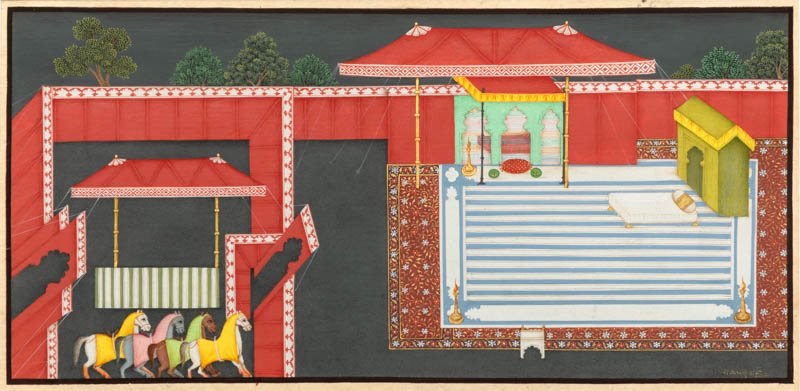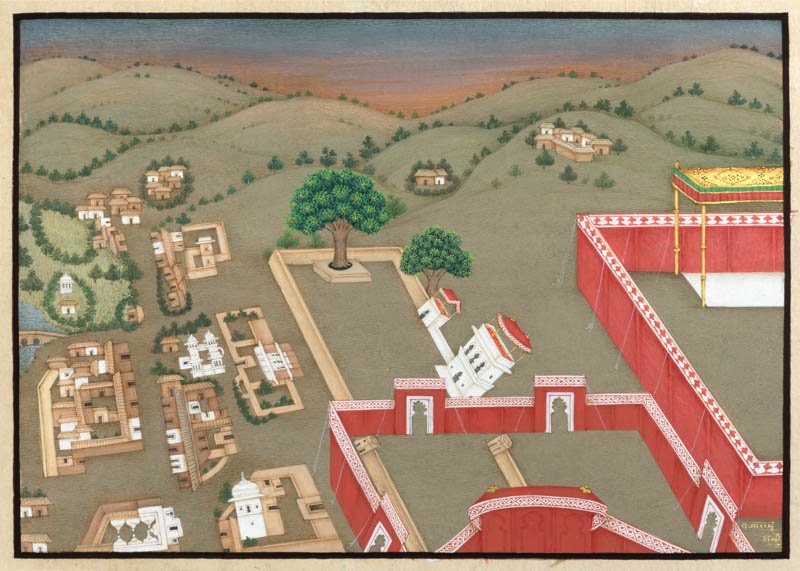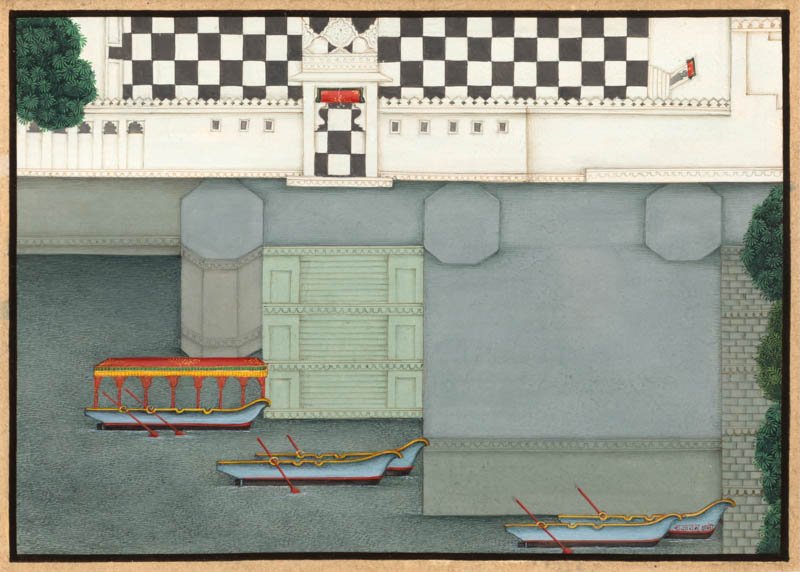February 9 - March 12, 2022
WEDNESDAY - SATURDAY 11 - 5
Raja Ram Sharma
Contemporary Indian Miniatures
Raja Ram Sharma is a master miniature and temple painter living in Udaipur, India. At the age of 13 he left home to be trained in the Nathdwara School of painting, founded in 17th century Rajasthan. In contemporary culture this means that his daily work is devoted to a traditional devotional art narrating The Life of Lord Krishna in paint on textiles called Pichwai, which hang in Hindu temples. However, in his home studio, away from his Pichwai workshop, Sharma has always practiced miniature painting, reinventing the evocative Mewar miniature tradition which he studied at the City Palace Museum of Udaipur since he was a young boy.
Measuring 6 x 8 or 8 x 14 inches, Sharma’s miniature paintings on cotton rag paper are made with one-hair brushes he makes from rabbit and squirrel hairs. His medium is a traditional hand ground gouache, made from pulverizing pigments from stone in a mortar and dispersing them in a mixture of gum arabic and water. His centuries old technique reveals the inherited knowledge of color and brushwork passed along a lineage of painters from 1600 to the present.
In these captivating miniature scenes Sharma pays tribute to the exquisite, illustrated manuscripts painted in the imperial ateliers where Hindu and Islamic traditions were fused with the influence of Persian court painting.Rather than depicting courtly life and conquests, he eliminates the human presence to explore the haunting spirit of deserted kingdoms and the nature of water in Nature.
Raja Ram Sharma’s miniatures are in many private and public collections including the Boston Museum of Fine Arts, Davis Museum Wellesley College, Indology Department, Middlebury College, National Gallery of Victoria, Australia, Srinathji Temple, Nathdwara and the Harmony Foundation, Mumbai. His paintings were exhibited in “Gems of Rajput Painting” at the Museum of Fine Arts, Boston in 2011.





















